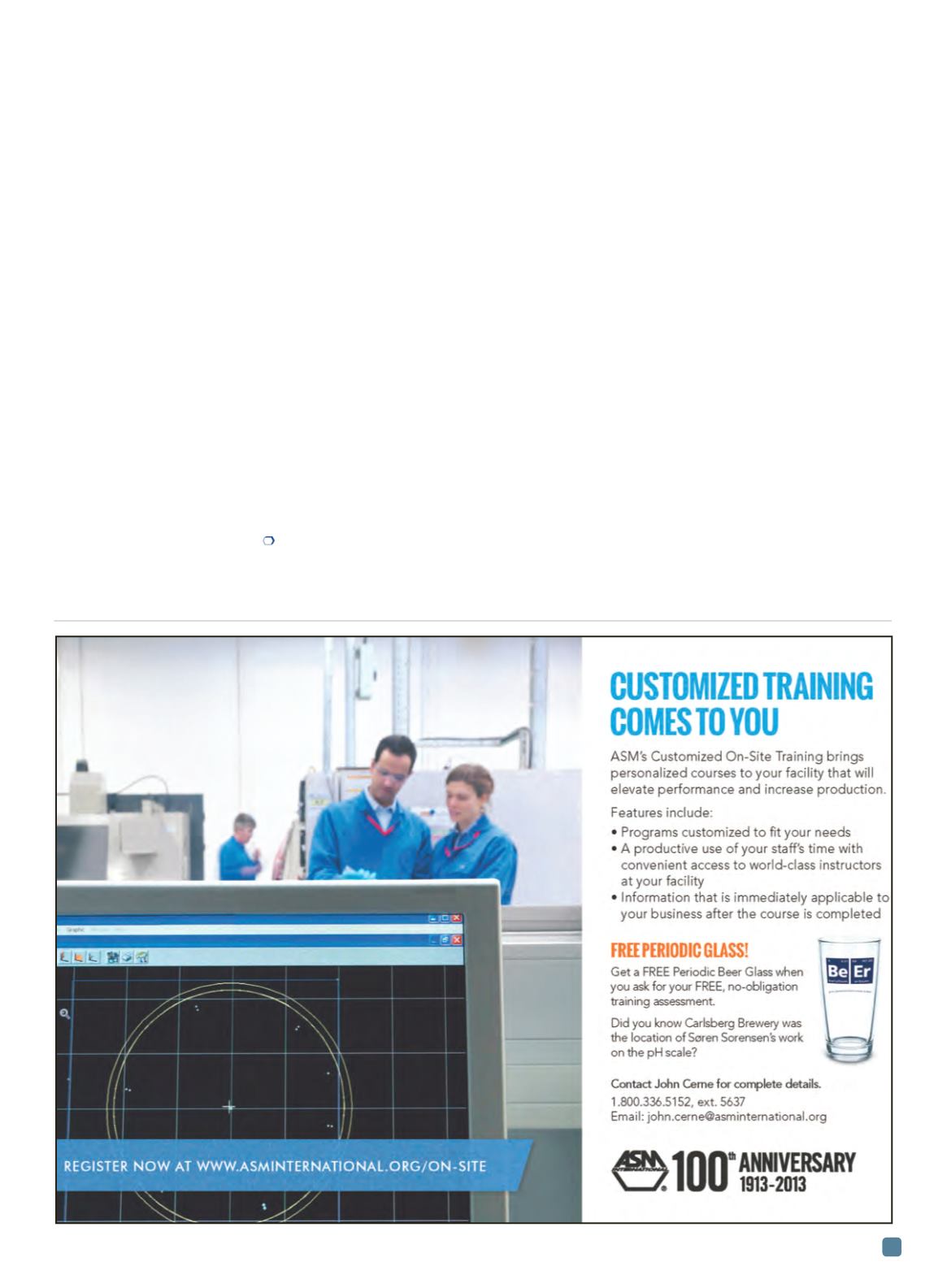

structure of oxide layers is changed to form a dense and protec-
tive surface scale after exposure to an open flame or other heat
source (Fig. 4). There are similarities between the effect of rare
earth elements on magnesium oxidation and oxidation of high-
temperature alloys, forming protective oxides. The reactive ele-
ment additions positively affect ignition and flammability
resistance and improve the protective properties of surface oxide
layers at the same time.
Summary
The application potential of magnesium alloys as lightweight
structural materials in aerospace and especially inside the air-
craft cabin are hindered by their high surface reactivity at in-
creased temperatures with particular concerns of ignition and
flammability during a potential contact with a flame or other
heat source. Global efforts to develop ignition-resistant and non-
flammable magnesium alloys widely explore micro-alloying with
rare earth metals and other elements having a high affinity to
oxygen. As demonstrated by experimental alloys, this approach
allows shifting the ignition temperature well above the liquidus,
not only easing requirements on protective atmospheres during
liquid-state processing, but also increasing the safety margin for
possible aerospace applications.
For more information:
Frank Czerwinski is group leader, senior
research scientist, CanmetMATERIALS, Natural Resources
Canada, 183 Longwood Rd. S., Hamilton, Ontario, L8P 0A5,
905/645 0887,
frank.czerwinski@nrcan.gc.ca,
www.nrcan.gc.ca/ mining-materials/materials.References
1. T. Marker, Evaluating the Flammability of Various MagnesiumAl-
loys During Laboratory- and Full-scale Aircraft Fire Test,
DOT/FAA/AR-11/3, U.S. Dept. of Transportation, Federal Aviation
Administration, Atlantic City, N.J., 2013.
2. A. Stachel, Light Weight Alloys in Seat Design, Influence of Mag-
nesium in Seats, Keiper Recaro Group, www.
recaro.com, 2013.
3. P. Boris, A Study of the Flammability of Magnesium, Federal Avi-
ation Agency, Washington, 1964.
4. F. Czerwinski andW. Smeltzer, The Growth and Structure of Thin
Oxide Films on Ceria-Sol-Coated Nickel,
Oxidation of Metals,
Vol
40, No. 5-6, p 503-527, 1993.
5. J. Fan, et al., Oxidation Behavior of Ignition Proof Magnesium Al-
loys with Rare Earth Addition,
J. Alloys Compd.,
Vol. 509, p 2137-
2142, 2011.
6. Y. Kawamura and T. Marker, Flame Resistant Magnesium Alloys
with High Strength, www.fire.tc.faa.gov, 2013.
7. F. Czerwinski, Magnesium Injection Molding, New York: Springer
Verlag, 2008.
8. F. Czerwinski, Oxidation Characteristics of Magnesium Alloys,
J. of The Minerals, Metals and Materials Society,
Vol 54, No. 12,
p 1477-1483, 2012.
9. Y. Kim, et al., Key Factor Influencing the Ignition Resistance of
Magnesium Alloys at Elevated Tempeartures,
Scripta Mater.,
Vol
65, p 958-961, 2011.
ADVANCED MATERIALS & PROCESSES •
MAY 2014
31


















